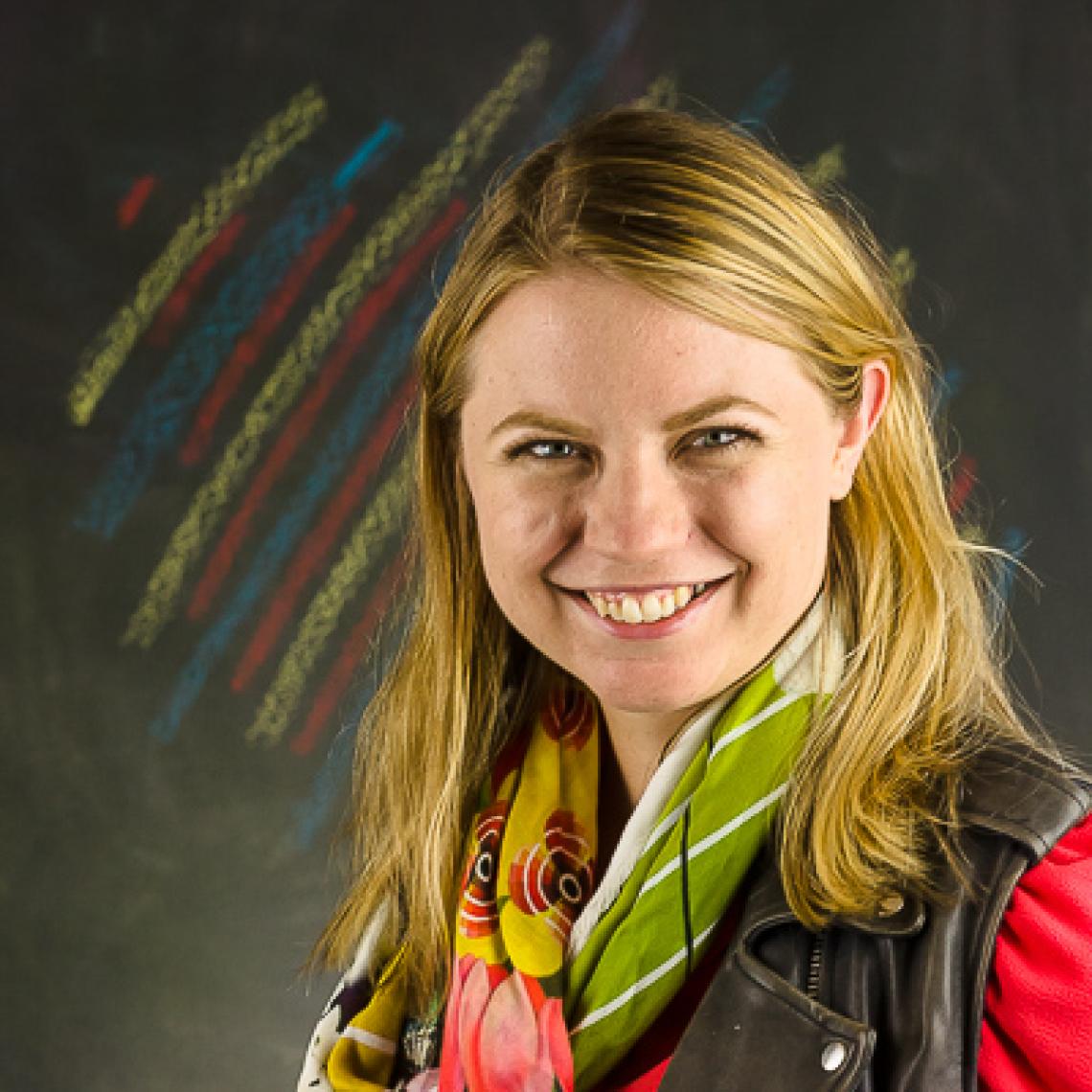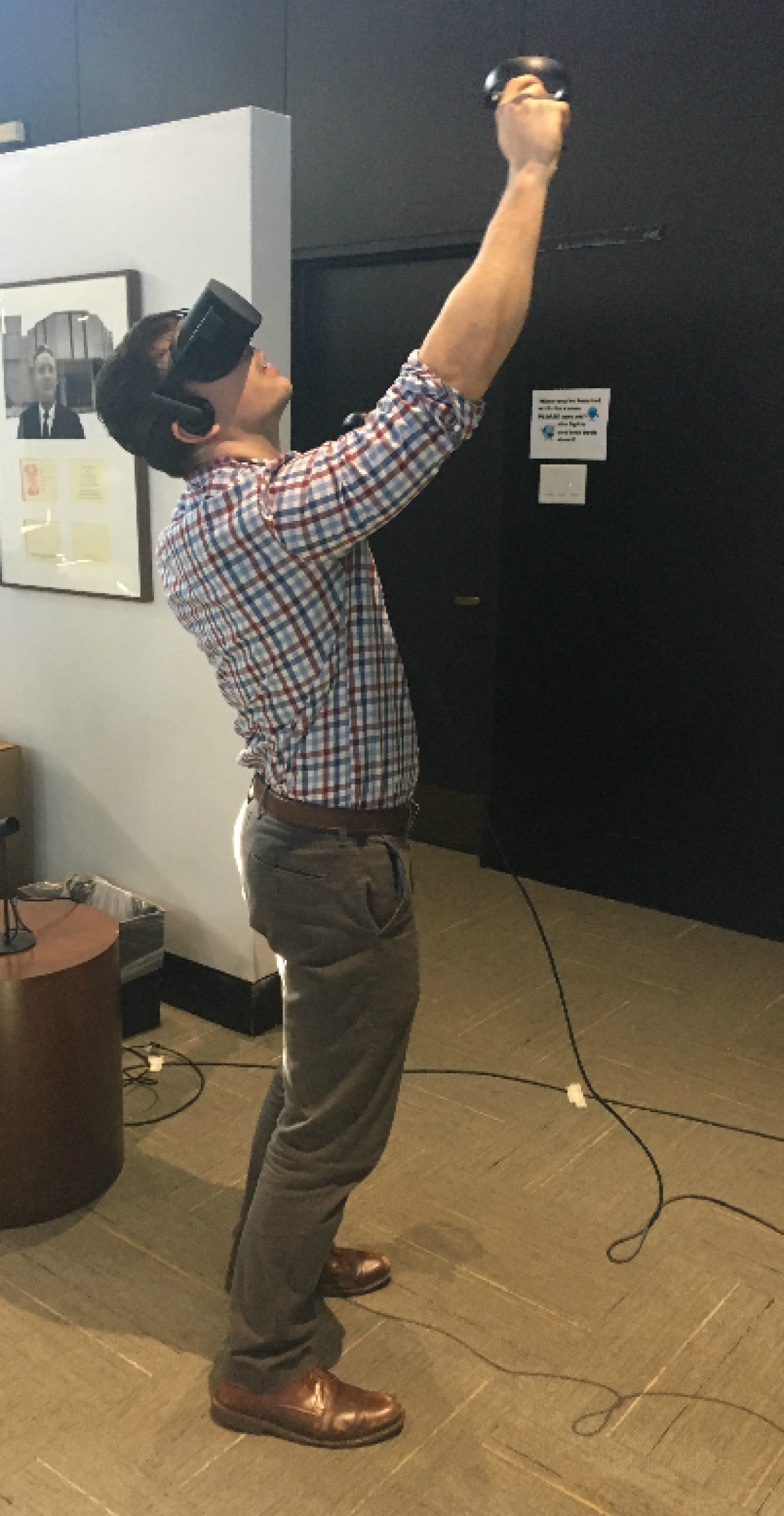TRANSCRIPT
Welcome to another episode of the Northwestern Digital Learning podcast, where each month we highlight an example of innovative teaching and learning across campus. I'm Kelly Roark, a faculty support specialist with Teaching & Learning Technologies at Northwestern University, and your guest host in this episode. I'll talk with Rebecca Poulson from the Knight Lab who helps me understand the difference between augmented reality and virtual reality. She also told me about the variety of devices they have up the Knight Lab. Let's start by listening to Rebecca explain the various types of “reality” out there.
REBECCA POULSON: AR is augmented reality which is overlaying digital information on the real world that you inhabit, and then there's virtual reality and virtual reality brings new worlds to you. So that's where your view is occluded and you're inhabiting a space that is entirely constructed of digital information. The overarching term I like to use is “immersive media” which is never wrong - it's just content that you inhabit spatially instead of on a flat screen. I like “immersive media” especially when I'm talking to storytellers. It feels like less detached then coming at people with like a bunch of acronyms.Yes, so many acronyms! Rebecca, what's your role in the Knight Lab?
I am a software developer and I manage our emerging platform space. I am a tech lead in the Knight Lab Studio class which is our interdisciplinary class that runs every quarter where faculty and staff pitch projects that we want to work on and then we take applications and assemble a team of students from across the university.
Rebecca, tell us more about the types of immersive reality devices and equipment you have in the Knight Lab.
We have a really gorgeous responsive web design testing suite which is great for non-experimental technology as well. There are a bunch of mobile devices that are networked together so that you can see how your story or whatever works on different phones. A lot of the devices we have are the higher-end phones. We have a Microsoft Hololens which is a head mounted display and we also have a Magic Leap which I believe is still only available in six different cities. It's pretty fun. For VR, we have quite a range of devices. We have Google cardboard, which is great, being in a journalism space. We do a lot of New York Times VR stuff, follow what they're doing. The next step up from the cardboards, we have the mobile devices that are made for specific phones. So that's going to be your Samsung Gear VR which is going to run on a Samsung Galaxy, the last three models, I believe, of that phone, and the Google Daydream which is made for the Google Pixel. So there’s a lot of beautiful sound content for those two devices and I, like, don't think they should be underestimated.
Then we've got the Oculus Go. It's nice because like you don't need to have a particular phone to use it. The Gear VR the Oculus Go and the Oculus Rift have a lot of shared content. There's a lot of content that are exclusive to the Oculus platform but can be seen across those three devices which brings us to our two head-mounted displays or HMD 's which is the Oculus Rift and then we have the HTC Vive that you have to do a permanent install for. We have big lighthouse sensors in the lab in front of a play space and we just got the wireless adapter for that which means - we used to have about like 3 cables connected to you while you're doing that, so if you were in the lab trying it out, I or one of my student fellows would follow you around moving things out of your way all the time - Now you're not tethered, which really adds to the sense of immersion. Because I think that anytime you have elements from the physical world, like when you're in a VR headset and someone is having your conversation in the physical space around you, it's very annoying, and I feel like the cables and stuff are like that too, it just kind of pulls you out of it .
There's all this existing content out there, do you have any favorites?
Tiltbrush is the thing that most consistently makes people be like, “I get it.” Like, walking around in the experience that you made, like being able to draw a box that you are inside is really kind of mind blowing and just the UI is really nice, like, very talented and thoughtful people behind that, and it just feels magical. The other thing that's made me feel like that where it's like, “Whoa, we live in the future now” was actually like when I put on the Magic Leap and a lot of that is because the Magic Leap runs off this little light pack, that's kind of the of like a canteen, is what it reminds me of, and you wear it around your neck and it's that feeling of like being super untethered and you can construct a space around you and it knows about all the things that are in the room. Also you don't have to worry about running into things because it's augmented reality, you can see through it. And I actually realized that that made me able to get more into the experience than I am sometimes in VR where I'm trying to stay in like a nine square foot area.
You spoke with Ariel Rodgers as part of our TEACHxpert series. Ariel is an instructor in Radio, Television & Film, and she wanted her students to experience a handful of AR and VR content. Could you talk about how a collaboration with an instructor happens if they want to do something similar?
The best way to start off that kind of collaboration is to come in for a meeting because there is so, or like to experience the content yourself, or to just experience the technology yourself, because there's such a wide range of content. Especially a lot of like more educational or documentary content is available free or cheaply where like we might be able to make, you know, some decisions specifically in support of your class. One of my student fellows would demonstrate some of the content for you and then we can talk about what you're hoping your students will get out of this and we can to think together about what experiences might support that in the best way.
And what do you think students are learning when they experience this new way of viewing content?
I think a lot of it is just developing literacy for moving in 3D spaces that some of the work that I'm most proud of is that just when students have an intuitive understanding for like how information works in that space I think it's important and interesting.
It's easy for me to see how somebody who's in film or visual arts can use the resources available. But I'm really curious about how the less the less obvious uses like, for example, I can't imagine how somebody a math major would find contact but I'm betting there's something out there.
There are two student employees whose full responsibility is curatorial stuff right now. So if there was a math professor who was like I really want to do math in VR I would, right now my team does have the bandwidth to be like, “Hey, you know, like can one of these students spend an afternoon seeing if there's anything that we can do?” I think that would be interesting and that would be fun but I think that's definitely a space that's going to grow. VR is really good at getting a sense of scale and so like things like monuments and stuff there's a lot a lot of content around. And also geography! I had a student who was thinking about going on study abroad that came in to do a Google Earth VR with all the study abroad locations that they were thinking about. Like that's kind of cool, you know? And she talked about it in a way that she thought this was going to be really beneficial for her, that she was going to genuinely be, like, less overwhelmed when she gets to a new environment, which was interesting.
So it sounds like some of the major true advantage to AR is the sense of scale and maybe like a sense a sense of movement that you can’t experience with your two feet on the ground.
So I think that AR and VR have separate but perhaps overlapping advantages. You know AR, especially head-mounted AR can give you information exactly where you need it, often while keeping your hands free. VR, I think there is like, so both AR and VR you like have this advantage, making scale feel much more visceral than it does in printed media. But VR also has this feeling of presence when it's well executed where like, well I don't think you can say, that certainly not, that you know what it is like to be a person. I think that like when, especially I feel like this is especially true in like animated content. So I'm thinking of like Dear Angelica, which is a piece from Oculus Story Studio from about 2016 that was hand drawn in VR and Oculus Quill. And that is a place unlike anywhere that I've ever experienced. Like, that shouldn't even be... my brain should not register that as a place. But you do feel as if you are there and that you are inside of that drawing. So I think that, like presence is a really effective quality of good AR and VR content.
To learn more about the VR and AR equipment at the Knight Lab or just schedule an appointment to experience it for yourself, visit KnightLab.Northwestern.edu. That’s “knight” with a “K-N”. Find the link on our website, DigitalLearning.Northwestern.edu. Thanks for listening! You can find this episode as well as all of our previous episodes on the Digital Learning Soundcloud. Until next time…
Story image via: image via: https://www.microsoft.com/en-us/hololens/hardware


